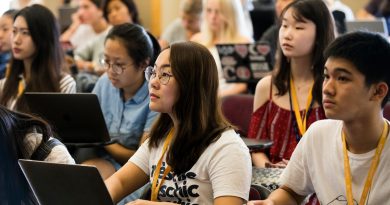What is YOUR Perspective on Teaching?
By Donna Qualters, Director, Center for the Enhancement of Learning and Teaching (CELT)
We’re often asked at CELT “What is good teaching?” While the literature speaks to characteristics and practices of good teachers, much of the assessment of teaching has to do with the match between the learner’s and instructor’s perspectives of the role of teacher. How do we view our role as teacher and what does that mean for our teaching?
Daniel Pratt (2000) has done a significant amount of work in this area. Below is an adaptation of his work on the five different perspectives teachers have on their role and what it means. If you’re interested in more, check out his web site http://www.teachingperspectives.com where you can take the Teaching Perspective Inventory and discover your perspective on teaching.
TRANSMISSION Perspective: This is a very common orientation in higher education. Teachers with a transmission perspective have a substantial commitment to content mastery and believe that the process of learning is additive. In order to transmit knowledge from teacher to learner, they provide clear objectives, give well-organized lectures, adjust the pace of lecturing, make efficient use of class time, answer questions, set high standards and develop objective means of assessing learning.
However, as with all perspectives, Transmission teachers have some difficulties. They can have problems working with people who do not understand the internal logic of their content. The also often spend too much time talking because they are primarily focused on the content not the learner.
DEVELOPMENT Perspective: The primary orientation of a developmental teacher is to develop in their students increasingly complex and sophisticated ways of reasoning and problem solving within a field. They are interested in assessing their learner needs and then finding linkages from where the learners are to where they want them to be. Their goal is to change the way a learner thinks rather than increasing factual knowledge base. Developmental instructors do this by becoming effective questioners and by developing meaningful examples that learners can relate to their current experiences.
There are challenges here as well. Being a good questioner is not easy. Finding the right way to stimulate thinking and engage a learner is very difficult. Having the patience to provide sufficient “wait time” while a learner processes a response is often frustrating because we want to jump in with the answer. Lastly it is challenging to develop assignments and assessment mechanisms that are consistent with complex reasoning.
APPRENTICESHIP Perspective: Teachers with this perspective believe that learning occurs when learners work on authentic tasks in real settings. Apprenticeship perspective teachers view themselves as coaches who not only build skills but also transform learners’ identities to acculturate them into a profession. In other words, to these teachers learning is a combination of creating learners who have both discipline competence and social identity within a community of practice. Apprenticeship teachers create competency and identity using “scaffolding” or breaking complex tasks into developmental smaller steps and then teaching from the simple to the complex. For these teachers it is very difficult to find “authentic” tasks in the classroom. They often use the case study approach or project- oriented assignments to simulate as closely as possible actual practice.
The NURTURING Perspective: Nurturing teachers believe that long-term persistent efforts to achieve come from the heart, not the head. Student motivation will be increased when the fear of failure is removed, there is support from teacher and peers, and achievement is a product of effort not benevolence of the teacher. These teachers provide a climate of trust and balance caring and challenge. Their strategies include listening and responding to emotional as well as intellectual needs, and providing a great deal of encouragement and support, along with clear expectations and reasonable goals for each learner.
There are things to consider with this perspective. Evaluation is difficult especially when institutional expectations are different from personal beliefs of what is needed to promote success. Nurturing teachers often give too much of themselves and burn out quickly or neglect other important work. Lastly, they can find themselves constantly defending their perspective against colleagues’ criticism.
SOCIAL REFORM Perspective: This is the most difficult perspective to describe and the rarest category to find. Social reform teachers operate under three assumptions. First, their ideals are necessary for a better society, second, their ideals are appropriate for all, and third, the ultimate goal of teaching is to create social change. They have, however, much in common with other effective teachers with different perspectives. They are clear and organized, bring learners into diverse communities of practice, ask probing questions, and work hard to promote the dignity of their learner.
For this perspective to be judged effective, learners must come to believe that the guiding ideals are as important to them as they are to the teacher. This is not an easy task when addressing and/or changing underlying value systems of students.
What does all this mean? As Pratt points out, perspectives are neither good nor bad, they are simply philosophical orientations to knowledge, learning, and the role and responsibility of the teacher. Research shows that most teachers hold one or two perspectives as their dominant view and marginally identify with one or two others. But what is important to remember is that each of these perspectives holds the potential for both good and poor teaching. It then becomes critical that we as teachers reflect upon what we do, why we do it, and on what assumptions we base our practice as teachers. By doing this, we will be able to revisit and readjust, if necessary, our own assumptions and pre-conceived notions about teaching and learning. In other words, we will continually improve the educational climate for our students.
Pratt, Daniel (2000), “Good teaching: One size fits all?” An Up-date on Teaching Theory, Jovita Ross-Gordon (ed.), San Francisco: Jossey-Bass.
Image: CC0 (Free in Public Domain) by Pixabay




